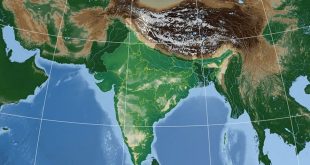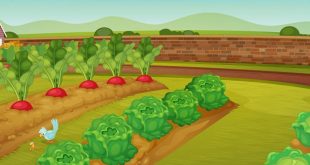NCERT 6th Class (CBSE) Social Science: India – Physical Features – Quiz 17 Multiple Choice Questions related to NCERT 6th Class (CBSE) Social Science: India – Physical Features – Quiz: They are fertile because they bring deposits of siets and sand along. Because they are rain fed and are seasonal. …
Read More »NCERT 6th Class (CBSE) Social Science: India – Climatic Conditions
Question: Name the main seasons in India and their duration in the year? Answer: The Cold Weather season starts from the middle of November and continues till the middle of March. The hot weather season starts from the middle of March and continues till the end of May. The south-west …
Read More »NCERT 6th Class (CBSE) Social Science: India – Physical Features
Question: Write short note on Great Indian Desert & Central highlands. Answer: Great Indian Desert: The Rajasthan plain or the great Indian Desert covers the western part of Rajasthan. The area has a number of short seasonal streams which are no able to reach the sea. therefore, this is an area of …
Read More »NCERT 6th Class (CBSE) Social Science: Major Landforms of the Earth – Quiz
NCERT 6th Class (CBSE) Social Science: Major Landforms of the Earth – Quiz 23 Multiple Choice Questions related to NCERT 6th Class (CBSE) Social Science: Major Landforms of the Earth – Quiz: Mountain is a huge landmass which rises more than 900 m above the mean sea level. Plateau id …
Read More »NCERT 6th Class (CBSE) Social Science: The Realms of the Earth
Question: Which two layers from the crust of the earth? Answer: The crust is made up of two layers the upper layer is called sail and the lower layer is called sima has rocks rich in silicon and magnesium. Question: What constitutes the hydrosphere? Answer: The hydrosphere oceans, seas, rivers and …
Read More »Major Landforms of the Earth: 6th Social Science
Question: Distinguish – (i) Tectonic and gradational forces, (ii) Erosion and deposition, (iii) Mountain range and mountain system. Answer: (i) Tectonic and gradational: Tectonic: Tectonic forces originate from within the earth. It create irregularities on the surface of the earth. Tectonic or the internal force is responsible for the upliftment and subsidence of the …
Read More »NCERT 6th Class (CBSE) Social Science: Maps and Map Reading – Quiz
NCERT 6th Class (CBSE) Social Science: Maps and Map Reading – Quiz 19 Multiple Choice Questions related to NCERT 6th Class (CBSE) Social Science: Maps and Map Reading – Quiz: There are four direction: North, South, East, West. These are conditional points. Most maps have an arrow (or a line) …
Read More »NCERT 6th Class (CBSE) Social Science: Rotation and Revolution – Quiz
NCERT 6th Class (CBSE) Social Science: Rotation and Revolution – Quiz 19 Multiple Choice Questions related to NCERT 6th Class (CBSE) Social Science: Rotation and Revolution – Quiz: It varies because of the change in seasons, during the summer, days are longer and nights are shorter and during winters, days …
Read More »NCERT 6th Class (CBSE) Social Science: Maps and Map Reading
Question: What is the importance of a scale on a map? Answer: Scale is defined as a relation or ratio of the distance between the same two place on the ground. For example – if 10 km on the ground is shown by 1 cm on a map, the then the …
Read More »NCERT 6th Class (CBSE) Social Science: Rotation and Revolution
Question: What is a leap year? Answer: One revolution takes 365 1/4 days 1/4 day is equal to 6 hours. We take 365 days as a single year and the 1/4 day of four consecutive years is added to the month of February in the fourth year. Thus, every fourth …
Read More » Class Notes NCERT Solutions for CBSE Students
Class Notes NCERT Solutions for CBSE Students




